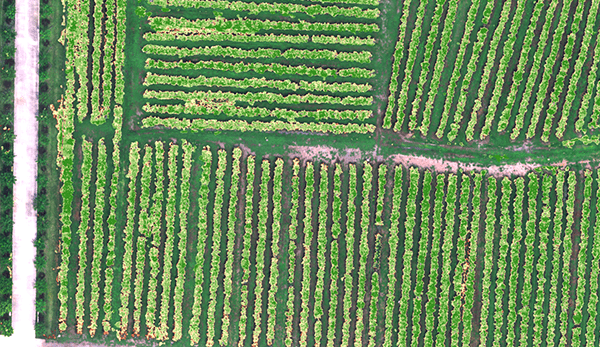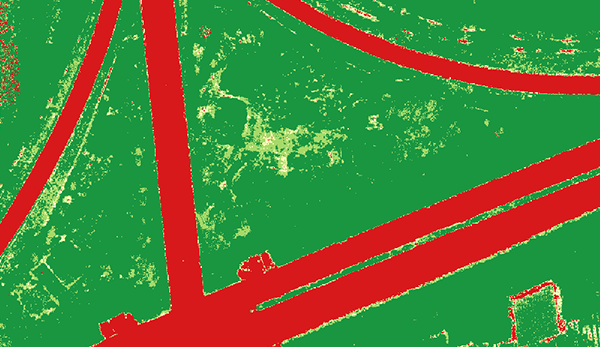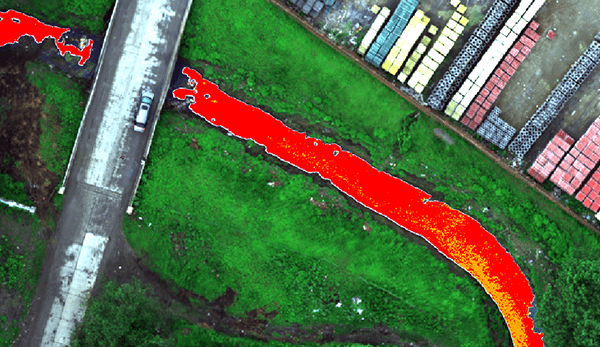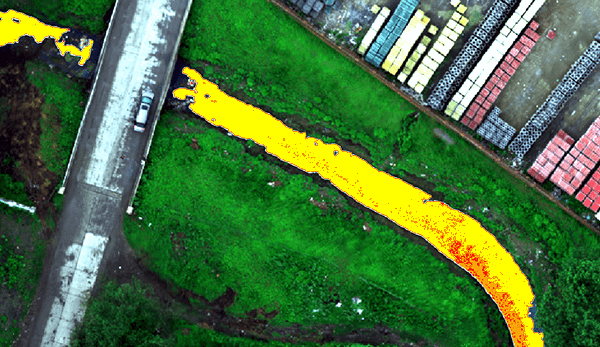5-band lightweight multi-spectral Yusense MS200
With five 1.3M pixel multispectral channels, an innovative dual-lens multi-band design, a large aperture, low distortion, broadband transmission, and an all-glass lens, the MS200 is built with an aluminum alloy body and lightweight design to meet the needs of scientific research and industrial applications in precision agriculture, environmental protection, urban greening, and other fields.
Using vegetation factors such as NDVI and LAI, we quantitatively describe the consistency of vegetation canopy status at different spatial scales. This complements the characteristic spectra of vegetation in different health states, allowing for quantitative assessment of vegetation growth and providing data support for irrigation, fertilization, plant protection, and yield assessment.


Based on vegetation fingerprint spectra, we construct a vegetation index to statistically analyze the spatial distribution and area of target vegetation within a specified area, providing quantitative vegetation cover data for scientific research and production in agriculture, forestry, grassland, and ecology.
Based on the evaluation standards for surface black and odorous water bodies, we use characteristic spectra to construct a classification index, enabling hierarchical inversion and spatial information analysis of black and odorous water bodies. This assists in analyzing the impact of domestic sewage, industrial wastewater, and other wastewater on surrounding water bodies, facilitating pollution source investigation and water environment assessment.


Referring to eutrophication status assessment standards, this system uses characteristic spectra to construct a classification index, enabling hierarchical inversion and spatial information statistics of water eutrophication. This assists in analyzing the impacts of agricultural wastewater, fishery aquaculture, and other factors on surrounding water bodies, facilitating pollution source investigation and water environment assessment.
| Indicator name | Yusense MS200 | Yusense MS200 Pro |
| Assembly method | 5 multispectral channels |
| Target size | 1/4” |
| Effective pixels | 1.3Mpx |
| Shutter type | Global |
| Quantization bit number | 12bit |
| Field of view | 36.7°×31.3° |
| Ground resolution | 12.46cm@h120m |
| Coverage width | 80m×67m@h120m |
| Spectral channel [1] | 450nm@30nm, 555nm@27nm, 660nm@22nm, 720nm@10nm, 840nm@30nm |
| Optical window | Optical grade glass window |
| Host size | ≤50mmx50mmx50mm |
| Host weight | ≤100g |
| Installation interface | 4xM2.5 | M30 dedicated bracket and PSDK cable |
| powered by | 12V | M30 PSDK |
| Power consumption | ≤3.5W@12V | ≤3.5W |
| Image Format | 16-bit process TIFF (including GPS and ambient light information) |
| Video Format | – |
| Storage media | Standard and supports up to 64G capacity (transmission speed U3 and above rating) micro SD card |
| Processing software | Yusense Map, Yusense Map Plus |
| Parameter settings | WiFi (Web Access) | DJI Pilot 2 |
| Shooting trigger | Timing trigger, overlap rate trigger |
| Shooting frequency | 2Hz (related to the actual read and write speed of the storage medium) |
| Working environment temperature | -10℃~+50℃(Relative wind speed ≥1m/s) |
| Storage temperature | -30℃~+70℃ |
| Ambient humidity | RH(%)≤85%(non-condensing) |
| Product Certification | CE, FCC, RoHS |
Note: [1] Standard wavelength, the following 19 wavelength combinations are allowed for customization: full color, 410nm@20nm, 450nm@30nm, 490nm@25nm, 530nm@27nm, 555nm@27nm, 570nm@32nm, 610nm@30nm, 650nm@27nm, 660nm@22nm, 680nm@25nm, 720nm@10nm, 720nm@15nm (Qualcomm), 750nm@10nm, 780nm@13nm, 800nm@35nm, 840nm@30nm, 900nm@35nm, 940nm@30nm, (tolerance ±5nm).
Pay securely with your Card, Apple Pay, or Google Pay via Paymob.

A payment link, also known as a checkout link, is a shareable URL that allows customers to make payments online.
Cash/Cheque payment/Bank transfer
Inquire price for Yusense MS200